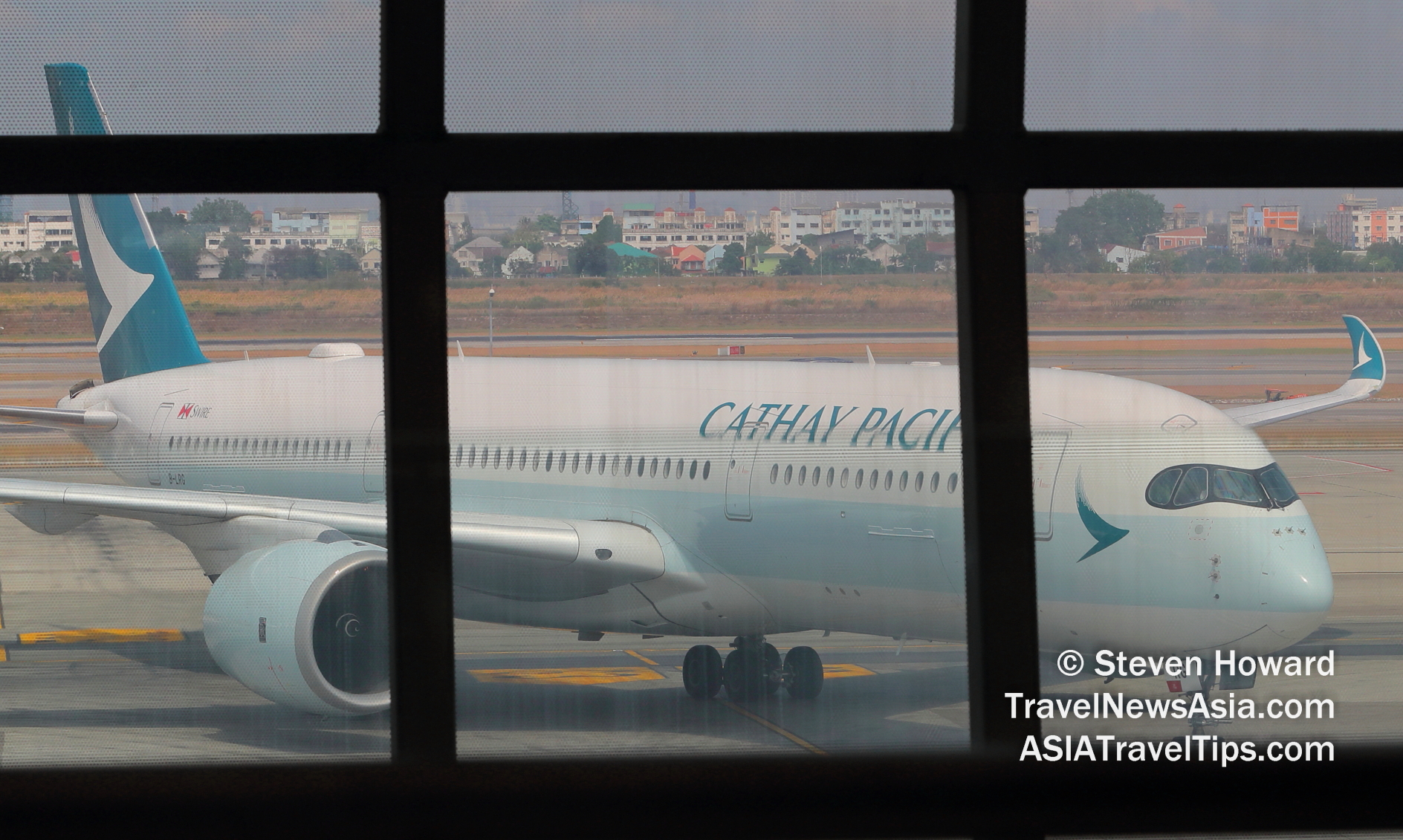|
(16 Mar 2022, 11:31 +07)
Cathay Pacific carried 31,253 passengers in
February 2022, an increase of 47.9% compared to February 2021 and
a 98.9% decrease when compared to the pre-pandemic level in
February 2019.
The month�s revenue passenger kilometres (RPKs)
increased 5.2% year-on-year, down 99% on February 2019.
The passenger load factor increased by 33.8 percentage
points to 47.6%, while capacity, measured in available seat kilometres (ASKs), decreased by 69.4% year-on-year,
down 98.4% compared with February 2019 levels.
In the first two months of 2022, the number of
passengers carried increased by 8.6% against a 72.8% decrease in
capacity and a 12.5% decrease in RPKs, as compared to the same
period for 2021.

Cathay Pacific Airbus A350 at BKK. Picture by Steven Howard of TravelNewsAsia.com
�The operating environment for Cathay Pacific
remains very challenging. Travel and operational restrictions in
place in Hong Kong continued to constrain our ability to operate
more passenger flight capacity in February and we operated below
2% of pre-COVID19 levels, a reduction of about 28% compared with
January 2022,� said Ronald Lam, Chief Customer and Commercial
Officer. �We have remained as agile as possible, deploying
passenger flight capacity to cater to last-minute demand, on top
of ongoing traffic from the Chinese Mainland to long-haul
destinations as well as post-Chinese New Year traffic from Hong
Kong to the Chinese Mainland. We also saw some demand for flights
to Australia, notably student traffic from the Chinese Mainland
and Hong Kong. As a result, we carried more passengers in February
than we did in January. Load factor edged up to reach about 48%.�
The airline carried 65,126 tonnes of cargo last
month, a decrease of 20.9% compared to February 2021, and a 50.4%
decrease when compared with the same period in 2019.
The month�s cargo
revenue tonne kilometres (RFTKs) decreased 53.3% year-on-year, and
were down 67.9% compared to February 2019.
The cargo load factor
increased by 0.9 percentage points to 80.5%, while capacity,
measured in available cargo tonne kilometres (AFTKs), was down by
53.8% year-on-year, a drop of 75.8% versus February 2019.
In
the first two months of 2022, the tonnage decreased by 27.1%
against a 59.1% drop in capacity and a 59.6% decrease in RFTKs, as
compared to the same period for 2021.
�We continue to operate a reduced long-haul cargo
schedule in light of ongoing crew quarantine measures and in
February we operated around 25% of our pre-COVID19 cargo flight
capacity. Tightened requirements for cross-border trucking between
the Chinese Mainland and Hong Kong, as well as the surge in
COVID-19 cases in Hong Kong, reduced demand from our home market.
Furthermore, the anticipated market recovery from Asia to
long-haul destinations was slower than expected post-Chinese New
Year,� added Mr. Lam. �In order to mitigate these headwinds, our teams
focused on regional routes and we saw encouraging demand on these
services. Of particular note was the demand for Rapid Antigen Test
(RAT) shipments, which was strong throughout the month and
continues to be so. As of the end of February, we have delivered
over 13 million RAT kits to Hong Kong. We will continue to support
the Government�s anti-pandemic efforts with the delivery of
important medical supplies.�
Looking Ahead
�Looking ahead in March, on the travel side we
originally expected that the majority of passenger traffic would
continue to come from our Chinese Mainland routes. However,
stricter capacity restrictions have since been put in place by the
Chinese Mainland authorities as part of their pandemic control
measures. These, together with the current restrictions in Hong
Kong, mean that we do not foresee significant signs of recovery in
passenger travel demand in March,� Mr. Lam said. �Regarding cargo, we are re-deploying freighters
to North Asia and the Indian sub-continent to maximise
opportunities within the region while our ability to operate
long-haul services remains constrained. Nevertheless, we are
continually looking to increase our long-haul cargo flight
capacity where possible, and we have resumed freighter services
into Atlanta, Houston and Miami in the US. Our total Hong Kong
export volumes will likely remain under pressure throughout the
month. Despite this, overall demand from other markets is
strengthening and we will look to capture as much of this
opportunity as possible.�
|
Headlines: |
|
|
